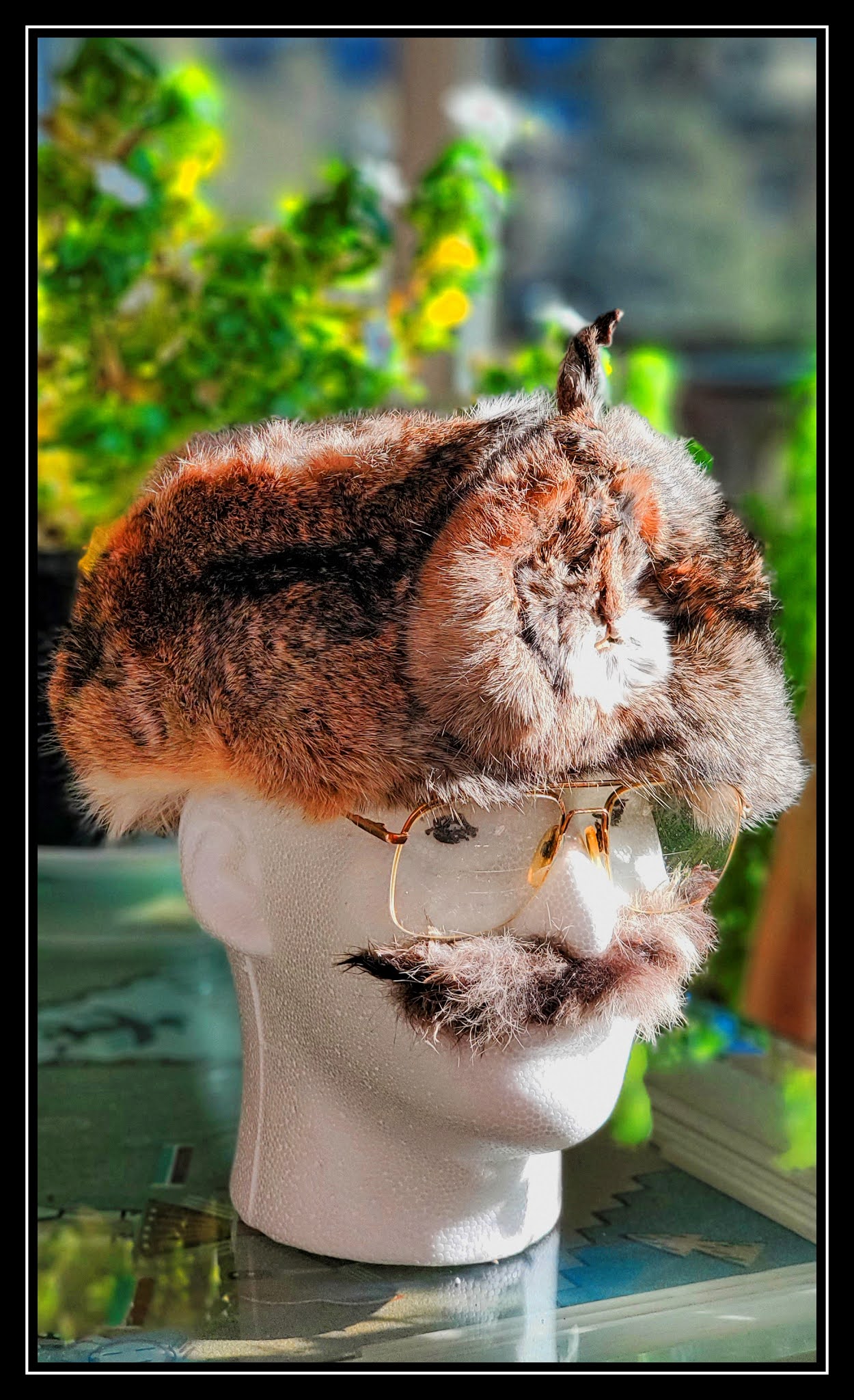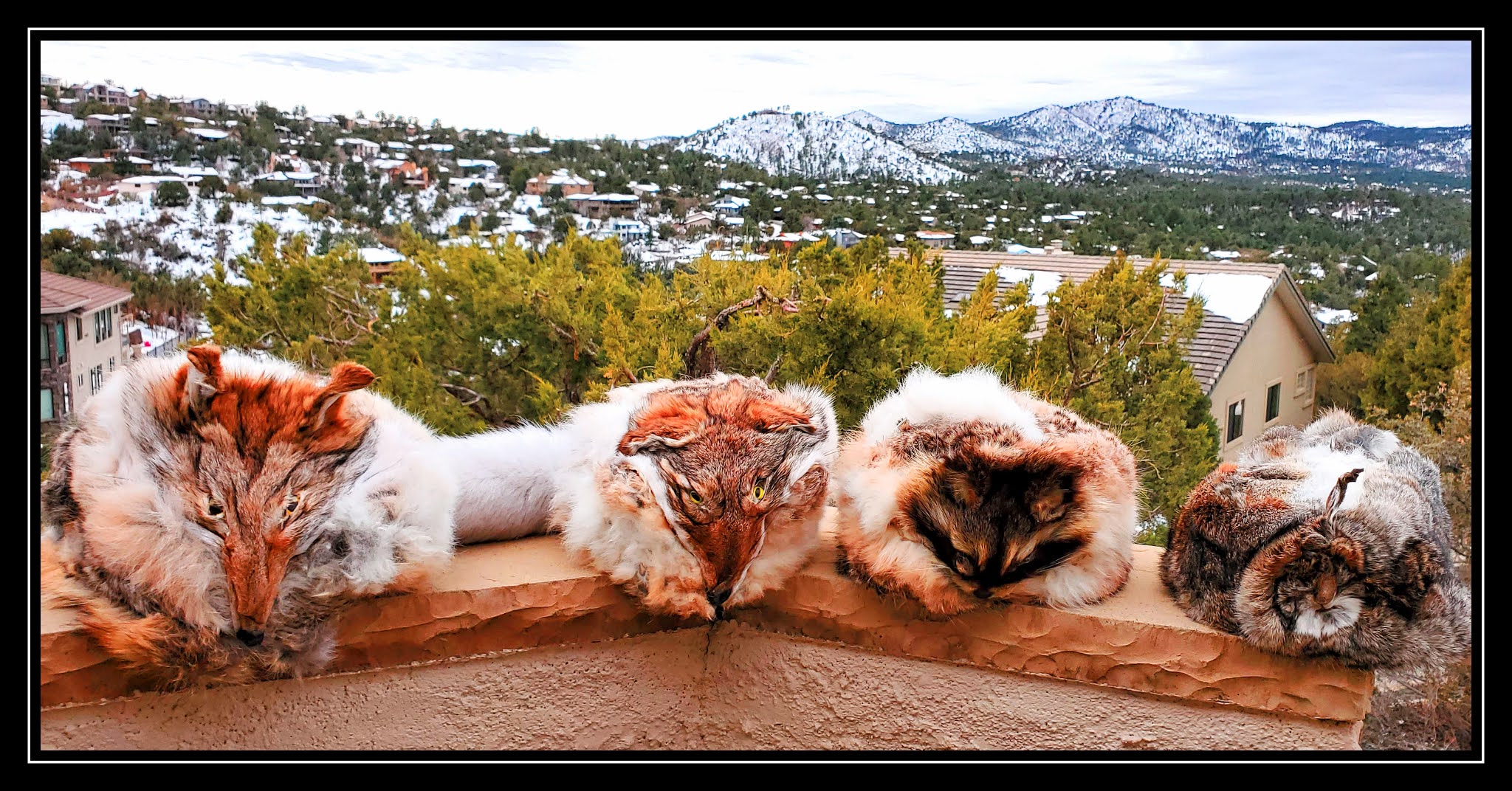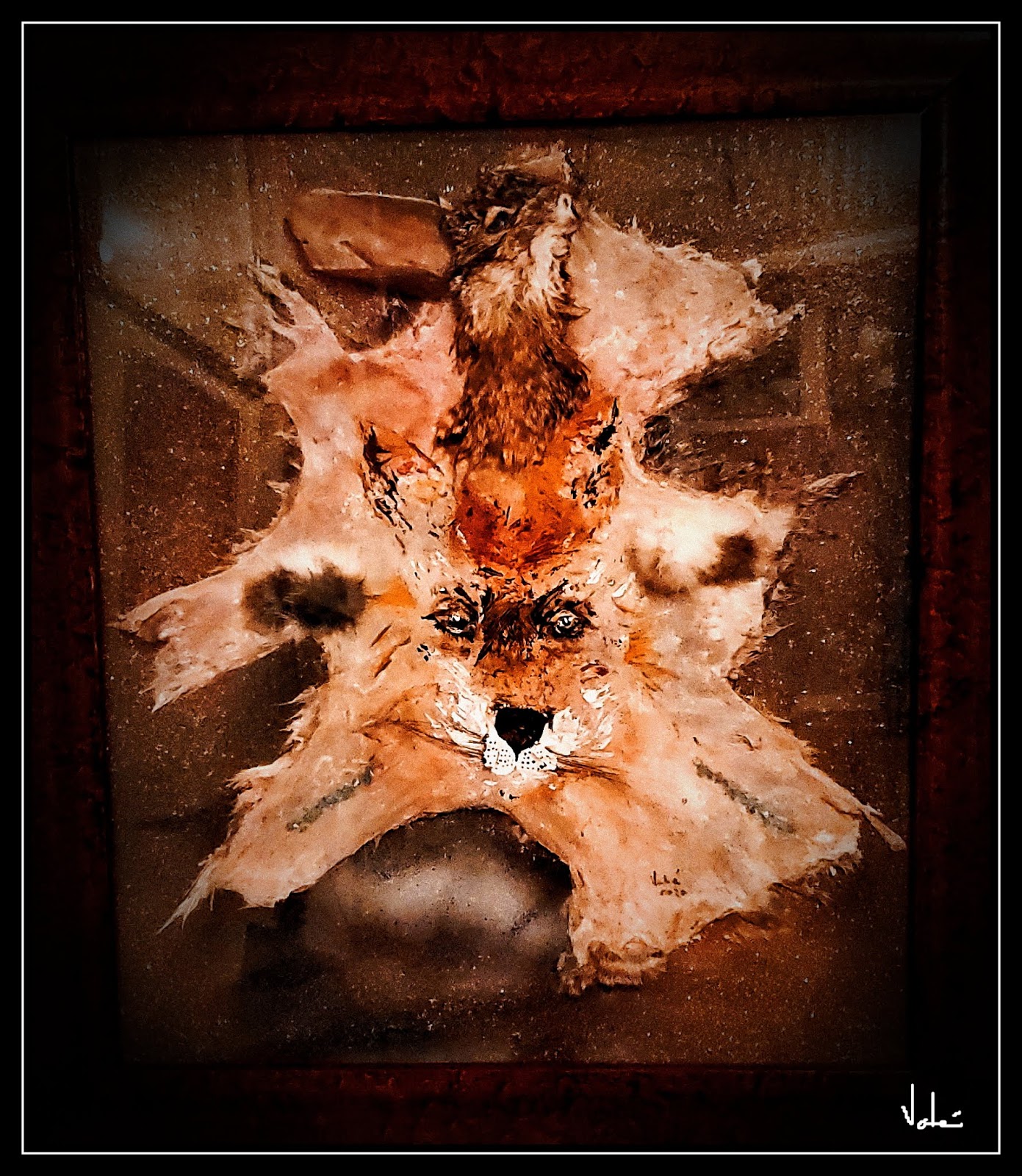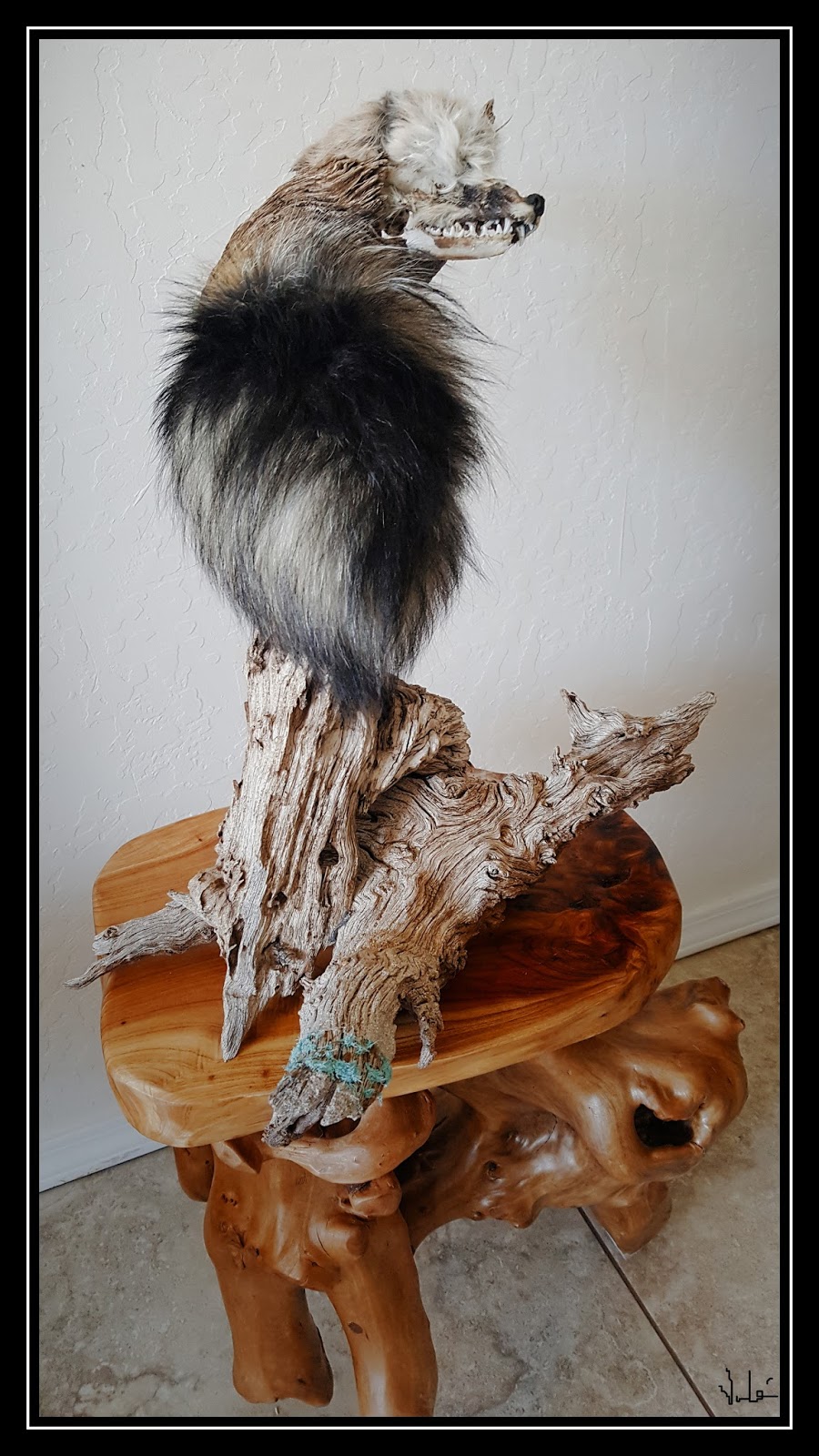Wild Rabbit Pelt to make Rabbit Fur Hats for High Desert Winters
I was not planning to write and post this essay about fur hat making, but I received a number of emails from Eastern Europe and countries on the Eastern Coast of the Baltic Sea about the hats I had made. The common question was: how do you sew wild rabbit skin to make a hat that will last?
Well, it is not an easy question to answer, as folks from these =countries wear fur hats at least 4 months a year and know exactly how to judge a good hat. The wild animal pelts they use are mostly from bear, wolves, beavers, but I understand that all hats made with rabbit, mink and fox pelt are from farmed animals.
Therefore, I decided to write about my experience without necessarily sharing all the “secrets” I have accumulated over the years!
It was the latter that was all new to me and I wanted to learn more how to express myself through these media.
First I learned the bone and hide preservation techniques. Like any creative work, these have their “secrets” too. Indeed, while some of the methods, tools, techniques and ingredients are common across artists, each has however a twist of sorts which is the secret they do not share.
Regarding the materials, most skulls are buffalo or bull as they come from farm raised animals and can match the artist’s need of size, colour, shape, etc. There are still many artists who use wild animal horns, antlers and skulls but there is no control on what one gets from Mother Nature. So, these artists decide and design their artworks based on what the materials they get from nature.
A very different approach to arts compared to a painter’s who can frame any size or texture of blank canvas and then paint on it.
So, I was attracted to artwork that uses what one can get from nature – raw, incomplete, damaged but full of personality and sometimes mystery!
The American Southwest is home to many desert species that over centuries have provided meat for food, pelt, antlers and skin for clothing but also artwork. The most common of these species are cottontail rabbits, black tail jackrabbit (hare), deer, and elk. Given the large population of rabbits and hare, I learned pelt/skin preservation after many, many attempts.
Then it was time to figure out what to paint and how. My first large painting, with oil paint, was on hare skin. I decided to paint a symbolic mountain lion (cougar) as it is the most feared predator of the Southwest as well as many parts of the United States.
I wanted to express the old Latin saying:
Homo Homini Lupus Est
This stands for “man is a wolf for fellow men”.
To achieve this symbolism, and since the Latin saying has an obscure pathology to it, I gave the cougar dual beast and man pathognomonic features, namely an elongated human face compared to a big cat’s round face, a recognizable smirk and blue eyes --one in human eye shape, the other that of a cat!
Here is that painting:
As a utilitarian, I use every piece of materials I have for a practical purpose. Living in the high desert of Arizona which means the desert in altitudes of 5,000 to 7,000 feet above sea level, we see serious cold weather about two months a year. We often have snowstorms that bring feet of snow followed by cold weather so nothing melts. Here is a photo from last week’s storm where the two feet of fallen snow were piled up as high as 5 feet given the winds:
So, 3 years ago I decided to make fur hats using pelts from rabbit, hare and coyote obtained from the desert, not a farm of any sort. I came to realize that Mother Nature has a simple rule: If you are not a predator, you are at constant risk. And to survive, you need to be light, muscular, small, and fast!
Consequently, the hare and rabbit pelts were much thinner than the pelts from farmed ones that are use to make hats. The coyote skin and pelt were thick enough to allow sawing, but the dried and preserved rabbit and hare pelts were paper thin and impossible to saw.
As a scientist, with a background in biology, chemistry and public health, the challenge was just right!
First, I realized that none of the hats made with rabbit pelt used only rabbits raised in farms. These are selected for their thick skin and can be controlled for size and colour. But, farm raised rabbits have very unattractive pelt and fur compared to wild rabbits!
Here is a picture of the most recent hat I made, Russian papakha style, with 100% wild cottontail pelt – note the long, colourful and fluffy fur:
I will come back to this hat later.
After trying various pelt/hide preserving methods, using pelts from different seasons of the year, and designing techniques of putting them together to make hats, 2020 was a year when, because of Covid-19, I had time to experiment how I could use different species hides together to make hats.
Here are the hats I made this year using a combination of hare, rabbit and coyote:
As the picture shows, the cold season is just about to end in the high deserts of Arizona. So, the one or two months a year time period we have to wear these hats are almost over! Soon it will be spring with all the magnificent colours the desert will exhibit given the rain and snow that replenished its aquatic needs. And then we will wear large brim hats to protect ourselves from the sun and heat.
But for now, the fluffy and very warm hats are still needed in early walks with the dog or the late night last outing with him. And the rest of the year they are in display at the entrance of my studio:
It is made with five cottontails’ pelts. Compared to the more “mountain man” hats I have made before and some showing in the photos above, I wanted a gentleman’s hat. Well, it feels funny to say that because with the social isolation due to the pandemic, there are no real opportunities (theater, concerts or restaurants) to go to wearing such a hat!
When I was done with putting the hat together, there was a large circle of empty space at the center of the forehead where two pelts came together. I planned it so because in the past I had the face of a coyote, a raccoon or a fox affixed there.
And that was fine for a “mountain man” fur hat. In this case, I needed to have a new idea.
I recalled preserving the face of a cottontail and never using it. Here is that face:
The roundness of it and the size fit perfectly the open space of the new hat.
But what was more interesting the mouth and teeth gave this rabbit a distinct character! Sooo, I just could not resist making him a bit mischievous by adding a blue taxidermy eye…
So to summarize my answer to the readers: yes, it is much easier to work with pelt harvested from farm grown animals because they have thicker skin conducive to tight sewing. Pelts from wild animals that are not predators are more delicate because of survival need: they need to run faster than the predators, stay light and athletic (no fat!), and change colour with the seasons for camouflage.
But, when wild animal pelts are use in artwork – painting, hats, sculpture or clothing, the thicker fur adds to the beauty of the final product. Farm raised rabbits do not really have fur since they are protected from the elements and fed comfortably.
Now the question is, what stitch type works best on thin pelts?
I have tried three of the most common stitches – continuous, cross, and ladder. The best is the ladder stitch as it allows for the seam to be slightly flexible to side pulling pressure a hat experiences. The worst is the cross stitch as the many needle stabs to the thin pelt render it more susceptible to tearing under pressure.
And here is my “secret” – I use surgical interrupted stitching at the end of the seam while using ladder stitching. It is a quick process but helps in eliminating tearing between the pelts sewn together. This may not be necessary if farm raised rabbit pelts are used.
Final disclosure: the wild animal pelts I use are from animals considered as varmint – they are everywhere and give farmers all kinds of challenges.
February 4, 2021
© Vahé A. Kazandjian, 2021












Comments
Post a Comment